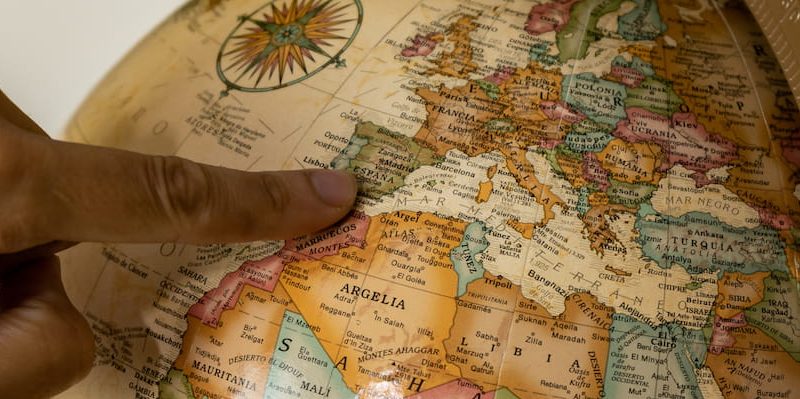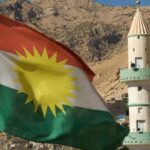We explain what a country is, how many there are in the world and what types exist. Furthermore, differences with a State and with a nation.

What is a country?
A country is a territory (that is, a portion of the earth's surface), endowed with its own geographical characteristics and occupied by a more or less culturally uniform population, and which may or may not constitute a sovereign political unit. That is, a country It is a political-geographical unit that is distinguished from the others mainly, in social, cultural, territorial and economic aspects.
The word “country” comes from the French term payswith more or less the same meaning, derived in turn from late Latin pagensisthat is, “inhabitant of a pay”, the latter being a canton or district of the Roman provinces of Gaul or Germania. In fact, it is a term linked to “pagan” (paganus), that is, “villager”.
Today, the term is colloquially synonymous with “State” and in some cases with “nation.” However, these terms do not really mean the same thing.
In fact, the use of the word “country” presents a certain margin of polysemy, since it is common to see it used to also refer to culturally autonomous regions (such as the “Basque Country” in Spain) or even to geographical regions belonging to the same culture. (like the “countries” inside France: Pays de Sault, Pays de la Loire, etc.).
How many countries are there in the world?
Countries, like people, have their periods of existence and have not always been the same, neither in their nature, nor in their number. At the beginning of the 21st century There are 194 sovereign countries recognized as such by the United Nations Organization maximum organization of cooperation between the nations of the world.
To them we should add the Holy See of the Vatican, that is, the Vatican City State: a political-religious entity that the Pope governs within the city of Rome, in Italy, and that lacks a numerically relevant population ( less than 1,000 people).
It is also important to consider the Palestinian nation, whose claim for recognition as a sovereign country has not yet been endorsed by the organization, due to its history of political-territorial conflicts with Israel.
In total, it could be said that there are 196 different countries in the world.
Differences between country, state and nation
These three terms, In a colloquial context, they can be used as synonyms since they all have to do with the different geographical and sociopolitical units in which humanity has organized itself. However, when honing our gaze, we must distinguish between the specific meaning of each one, as follows:
- Country. Of the three terms, “country” is probably the most ambiguous. It refers, as we have said before, to a specific territorial and political unit, which may or may not coincide with a State, and which may contain one or several nations. In that sense, a country is a political-geographical label, a name by which its inhabitants are known.
- State The term “State” refers to the set of institutions that operate in a society to establish its norms and administer sovereignty, both internally and externally of a territory considered its own. States, therefore, exist as social, political and legal constructions, which are administered by a government.
Thus, in a country there may be one or more States, depending on whether it is a centralized or federal organization model: the United States of America, for example, is a country that includes 50 different States, affiliated with the same political project. federal.
For example, a person who lives in the States of Washington or California is an American, but his or her daily life is administered by different local institutions and by different local laws.
- Nation Finally, the term nation can refer to two things: the political-legal nation, that is, the constituent subject of the State; or the sociocultural nation, a more subjective and ambiguous concept, which encompasses the ethnic, social and cultural similarities of a group of inhabitants of a country.
So, when talking about the nation (first meaning), we are basically referring to the State; while when talking about this or that nation, we refer to its inhabitants, its inhabitants or the culture that unifies them.
That is why there are plurinational countries, such as Bolivia, in which some 36 linguistically and ethnically different nations coexist within the same political and legal framework (the same State), and with the same Bolivian nationality (country). different from each other, such as the Aymara, the Canichana, the Araona, etc.
Types of countries

There are many different ways to classify countries, since they are as diverse as their own inhabitants. However, one of the most common is the one that takes into consideration their level of economic and industrial development, that is, what place they occupy in the world's economic circuit. According to this vision, we must distinguish between:
- Developed or industrialized countries. Those that have achieved a good level of industrialization and are capable of producing high-end goods and services, which represent an important economic income, which, in turn, translates into the possibility of providing their inhabitants with high levels of life.
- Emerging or developing countries. Those who are in the middle of long and difficult processes of industrialization or productive modernization, usually enjoying certain advantages of the industrial world, but suffering from certain conditions of the underdeveloped world. The standard of living of its citizens, therefore, is irregular and depends largely on historical-economic cycles: strong depressions and sudden booms.
- Underdeveloped or little industrialized countries. Those who have not yet managed to even begin their industrial development process, or who find themselves in political, social or economic conditions that are too adverse to even think about it. They are impoverished nations, which do not always manage to meet the minimum requirements for the standard of living of their inhabitants, and therefore often face structural problems such as hunger, misery, epidemics or internal wars.
Continue with: National territory
References
- “Country” in Wikipedia.
- “Country” in the Dictionary of the language of the Royal Spanish Academy.
- “Country or state: what difference does it make?” in The Vanguard.
- “What is a Country?” (video) at Audioversity.
- “What is a Country, and how is a country defined?” at The Geography Site.





